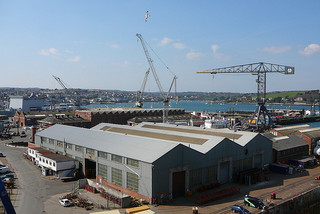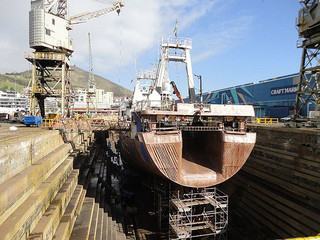 Plummeting shipyard prices is one of the reasons for the recent surge in new vessel orders amid weak demand and an industry-wide overcapacity, said Drewry Maritime Research.
Plummeting shipyard prices is one of the reasons for the recent surge in new vessel orders amid weak demand and an industry-wide overcapacity, said Drewry Maritime Research.
Market fundamentals are no longer the main driver of vessel ordering. “Even when the most recently ordered ships are delivered in 2016, Europe and the US are still likely to be climbing out of recession, which means that capacity in the east-west trades will continue to outstrip demand.”
Smaller carriers are taking advantage of the lower prices to gain a competitive edge over the bigger players, it said, noting China Shipping Container Line’s recent order for five 18,400-TEU (20-foot-equivalent unit) ships and United Arab Shipping Company’s (UASC) plan to purchase five such ships from an Asian shipyard.
UASC has also expressed interest in ordering four 14,000-TEU vessels. Orient Overseas Container Line ordered six 13,000-TEU vessels in 2011, the same year Neptune Orient Lines ordered ten 14,000-TEU ships and sought the upgrading of ten 8,400-TEU vessels.
Seaspan ordered five 14,000-TEU vessels in March 2013, and “K” Line has made an order for five 14,000-TEU ships.
Getting credit for such orders is still not difficult, said Drewry, even though the current surplus of vessel capacity is already destroying profitability through swinging freight rate decreases. This is because many ocean carriers are state-supported in some way, and their loans are regarded by banks as “sovereign debt” and thus not high risk.
Another cause of the ship shopping spree is the return of cash-rich non-owner operators, such as Seaspan, Costamare, Technomar, and Capital Ship Management, to the market in a big way.
They expect that as ocean carriers’ cash flow gets tighter, the charter market will increasingly be used for newer fuel-efficient vessels, including the wide-bodied 8,000-9,000-TEU ships currently gaining currency in South America.
“So, even where borrowing to fund newbuilds becomes too difficult, carriers will be able to circumvent the problem through leasing or chartering. The container industry, it seems, remains dominated by optimists,” said Drewry.
Photo: Tim Green





